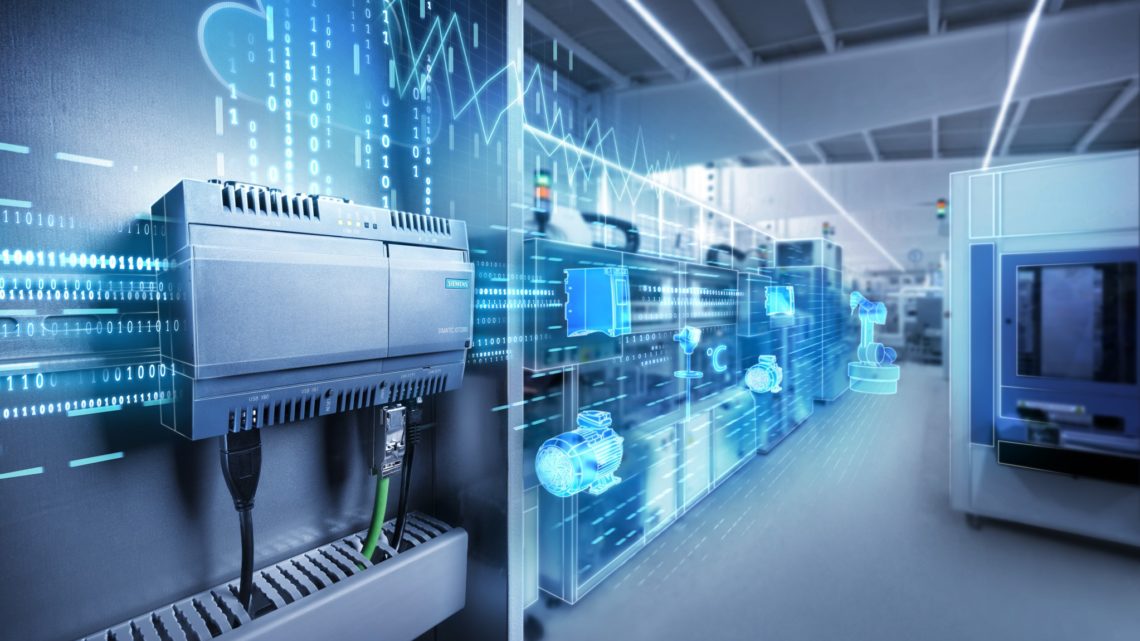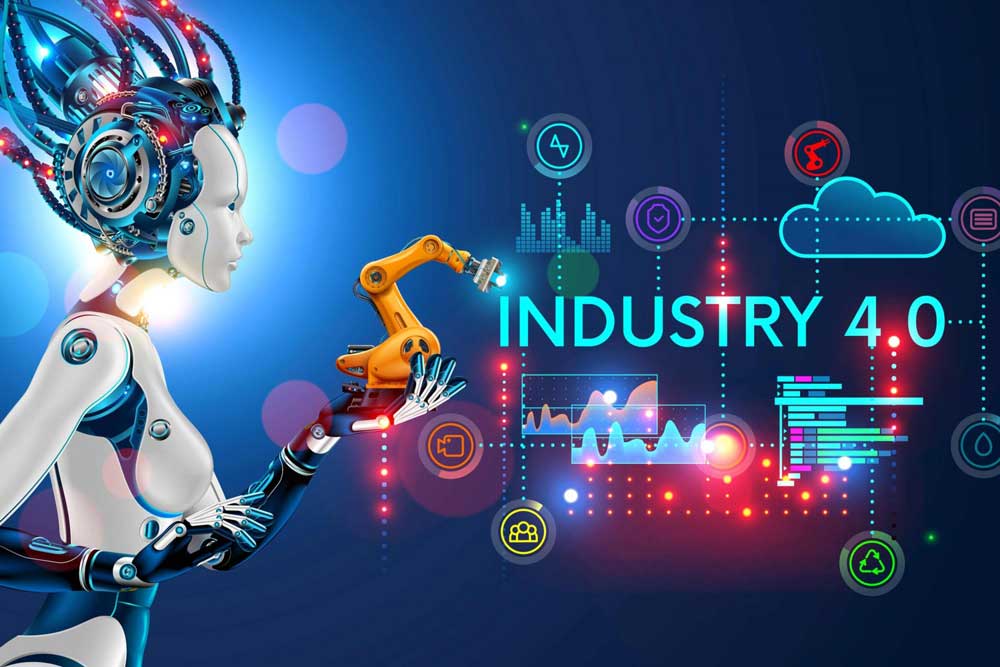PLCs and automation are inseparable companions in the world of industry. Programmable logic controllers (PLCs) have evolved into indispensable components for the advancement of any company in the realms of industry and technology.
In an ever-changing market landscape, where rapid deliveries and shifting consumer behaviors reign supreme, the adoption of logistics automation emerges as the catalyst for enhanced warehouse productivity. Automation, with its promise of swiftness and unwavering reliability, empowers businesses to seamlessly handle substantial volumes of goods.

What is a PLC?
A PLC, or programmable logic controller, serves a fundamental role as an industrial computing powerhouse. Its primary mission: overseeing the operations of automated handling equipment within a facility, including machinery like stacker cranes and conveyors. To achieve this, a PLC orchestrates the activation and deactivation of electrical components on each machine, such as signal beacons, relays, and motors.
What sets PLCs apart is their ability to operate in real-time, responding to and triggering machinery movements within milliseconds.
A PLC comprises various components, starting with the central processing unit (CPU), responsible for processing the PLC program and storing related data. Additionally, PLCs incorporate modules that facilitate physical connections between the industrial computer and the automated systems it manages. These systems rely on a combination of hardware and software to interpret instructions and execute functions for each machine.
Harnessing information from sensors and input devices linked to each machine, the PLC processes data and issues directives to the handling equipment. Picture this: an automated conveyor transporting a pallet to a lift. Once the sensor detects the unit load, the PLC commands the transfer of the pallet to the lift and then directs it to the appropriate level.
Furthermore, by digitizing and automating every product movement, the PLC has the capacity to monitor and record real-time data, encompassing variables such as operating temperatures and machine performance, providing a comprehensive perspective on operations.

How does a PLC work?
A PLC operates through the utilization of a fieldbus, an industrial communication network linking the system to an array of components within an automated warehouse. These components encompass sensors, electric motors, valves, switches, and more. PLCs are often equipped with safety features, ensuring machine reliability while minimizing the risk of errors.
Collaborating seamlessly with a supervisory control and data acquisition (SCADA) system, the PLC enhances decision-making within the warehouse environment. This tool empowers users with real-time insights, offering a window into a machine’s status or the precise location and destination of a moving pallet. Through a human-machine interface (HMI), logistics managers can visualize operations and issue directives for specific movements or simultaneous activation of various machines within the same workspace.
Remarkably, a single PLC can command the actions of numerous automated systems in a logistics center. Certain machines, such as Mecalux’s stacker cranes, boast onboard PLCs of their own. This cutting-edge equipment employs its dedicated PLC to oversee positioning, speed, and acceleration. The result? Accelerated workflow and adaptability to diverse facility requirements, spanning load capacity, product dimensions, structural heights, and more.

PLC, WCS and WMS: Distinctions and fuctions
Within the realm of automated warehouses, a rich tapestry of software and hardware elements converges:
- Programmable Logic Controller (PLC): This hardware acts as the interpreter, executing movements of automated systems based on information provided by higher-level software.
- Warehouse Control Software (WCS): An application empowering users to craft and simulate the PLC program, orchestrating and harmonizing the actions of automated elements within a facility.
- Warehouse Management System (WMS): This software takes charge of organizing goods-in/goods-out processes and synchronizes the operations of the automated facility with the movements of human operators.
The synergy among these three systems serves as the linchpin for seamless operations, ensuring the necessary number of cycles and optimal performance within the automated warehouse.

Navigating PLC Automation and WCS Software:
In the realm of automated handling equipment, two commanding forces step to the fore: the PLC and an industrial PC adorned with WCS, a formidable warehouse control software.
The WCS stands tall, designed to compile and execute structured text language instructions with finesse. It dances in harmony with the IEC standard for PLCs, guiding the graceful movement of goods and the orchestration of locations within an automated facility.
Deep within its programming veins, WCS houses a rich repository of machine intelligence across three dimensions:
- Mechanical: Here, the software stores the technical essence of each machine, even conjuring 3D animations of these mechanical marvels.
- Electrical: Easy WCS retains insights into the electrical components that grace each machine and how they are wielded in perfect synchrony.
- Software: This level boasts a treasure trove of instructions, safeguarding the flawless operation of each machine and dictating their precise choreography of movements.
The allure of WCS extends beyond its mere functionality. It embraces the art of simulation, offering a playground for virtual exploration within the automated warehouse. Each machine’s software can be tailored and molded to suit the unique characteristics of the facility.
By mastering the orchestra of automated warehouse elements, WCS crafts a virtual realm, mirroring every facet of the center, from goods to storage systems and handling equipment. Simulation becomes a canvas to paint operational processes in a virtual landscape, enhancing decision-making and facilitating change implementation without disrupting the ongoing ballet of operations.

PLC and Automation: A Synergistic Partnership
In the realm of automated facilities, PLCs reign as indispensable champions. Their role? Ensuring that automated handling equipment gracefully executes its designated cycles and manages goods with impeccable organization. This strategic alliance forms the backbone of an integrated supply chain harmonizing flows and processes for unparalleled efficiency in procurement and distribution.
As the logistics landscape becomes increasingly demanding, businesses face the challenge of delivering efficient service to customers while taming operational costs. In this unfolding drama, automation emerges as a beacon of hope. When finely tuned by the orchestration of PLCs, automation becomes a strategic catalyst propelling businesses forward and gracefully adapting to the ever-evolving desires of consumers.
With a wealth of experience, Top Industries Inc stands as a beacon in the realm of designing and developing automated pallet transfer systems organizations of all stripes. Contemplating automation for your supply chain? Reach out to us. Together, we’ll craft a solution that perfectly aligns with the unique needs of your business.
People Also Ask
Common interview questions for PLC (Programmable Logic Controller) typically include inquiries about ladder logic, troubleshooting skills, knowledge of specific PLC brands and programming languages, hands-on experience with PLC hardware, and problem-solving abilities in industrial automation scenarios.
The role of PLC (Programmable Logic Controller) in automation is to control and coordinate the operation of machinery and equipment in industrial and manufacturing processes. PLCs execute specific tasks based on programmed instructions, ensuring precise and efficient automation, such as managing sensors, motors, valves, and other devices to achieve desired outcomes in production and control systems.
The three primary types of PLC (Programmable Logic Controller) are:
Modular PLCs
Compact PLCs
Rack-Mounted PLCs
Automation and PLC (Programmable Logic Controller) are not the same. Automation refers to the broader concept of using technology to perform tasks without human intervention, while a PLC is a specific device used in automation to control and manage machinery and processes. PLCs are a key component of automation but not synonymous with it.
